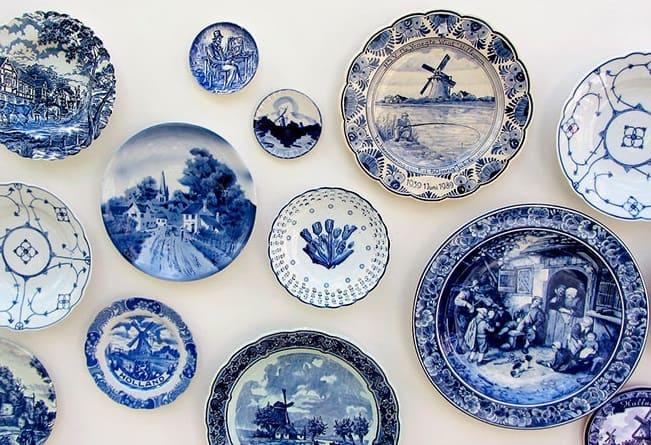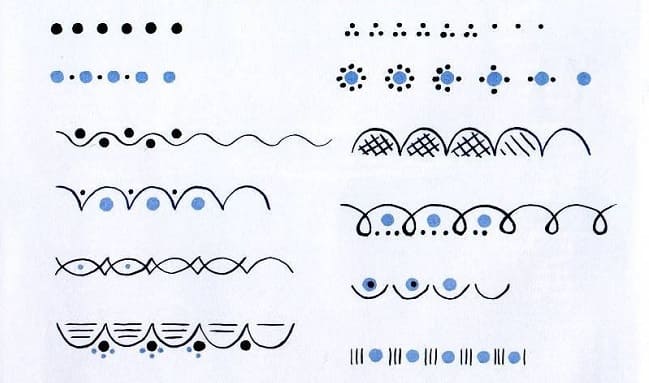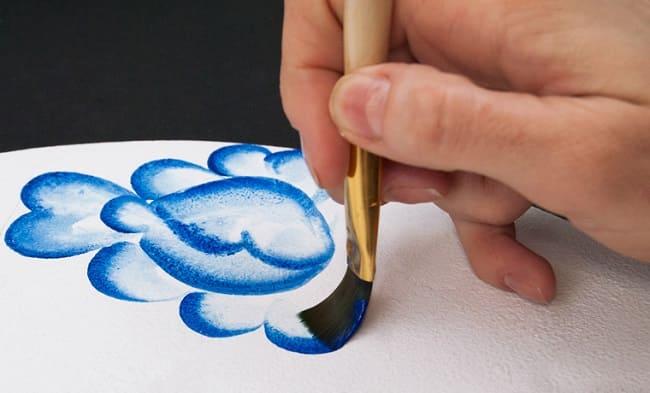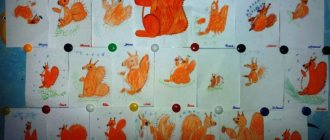Motifs and elements
Depiction of rural life in Gzhel
The theme of the painting is a reflection of the master’s worldview, traditional and cultural understanding of life, its course and main events. Artists can turn to iconographic elements; they capture scenes of everyday life and observations of the natural world.
The subject of the drawing is differentiated into 4 types:
- subject drawing – involves displaying the seasons, landscapes;
- ornamental - these are the usual mesh combs, pearls, as well as tendrils, droplets, layers and checkers;
- plant motifs - berries, buds, grass, branches and cereals;
- animals are usually birds.
Natural motifs and architecture today can often be found on tea sets and other Gzhel tableware. To this day, the masters depict peasant buildings, wide city streets, and churches on their products. Floral designs are also popular: take the same Gzhel rose, which migrated from porcelain to prints on clothes, etc.
Color scheme of Gzhel painting
Traditionally, the design is done only in shades of blue. Against the background white color of porcelain, the master is able to convey the entire palette of the universe with one color. But blue can be different: from faded blue to expressive deep blue, turning into shades of night. A dark cobalt color is also used. And the laconic Gzhel pattern is completed with platinum or gold decor.
And before that, Gzhel popular print was popular, when the craftsmen painted the dishes with blue, yellow, brown and purple paints, all on the same white background. But the most beautiful handicrafts are considered to be overglaze samples: the craftsman applied colored paints directly over the glaze. After this, dishes or other products must undergo three or even four firings.
The history of the emergence of Gzhel patterns and ornaments
The word "Gzhel" is the geographical name of several villages 60 km from Moscow, which are associated with easily recognizable white porcelain with blue painting. Gzhel is also associated with the emergence of porcelain itself in Russia, the unique recipe of which D. Vinogradov created specifically on white Gzhel clay. And no less interesting is the history of the patterns and ornaments of Gzhel themselves, so light and laconic, unlike other elements of folk crafts.
For a long time, Gzhel masters were looking for new color solutions, and the familiar white and blue format appeared relatively recently - in the middle of the nineteenth century. Before that, majolica dishes with brightly colored paintings were in high demand. White and blue solutions are a fashion that has come since the times of Peter the Great, and this is due to the painted faience brought from Holland. The foreign idea formed the basis of the Russian craft. It must be said that the Dutch themselves once borrowed blue and white patterns from the Chinese.

Delft faience (Holland)
Gzhel was called “Russian Stafforshire”, but the Gzhel patterns were distinguished by a special message, which was conveyed both in the technique, and in the choice of Gzhel elements, and in their combination. Blue sky, white churches, golden domes - these are elements of Gzhel painting that have become a reflection of the Russian mentality. And they became one of the most recognizable brands of Russian folk culture.
Master class on drawing simple Gzhel patterns
Today, elements of Gzhel painting for children and adults are again in demand in various educational products. In the preparatory period, a child learns to draw using stencils, then gradually draws simple elements of painting, recognizing the style and “getting his hand.” But an adult, even someone far from fine art, can learn to do the same.
Sitchik
To work you will need a long-haired thin brush. With this brush, only the tip is used to draw elements.
Let's draw a sitchik step by step:
- Take a thin brush and pick up paint with the tip, using one color.
- Try to draw small details of the ornament based on the model - for example, droplets.
- Small details in Gzhel are characterized by pure color; color transitions are actually not used.
- Make a simple flower from small droplets of the same color, etc.

It is convenient to start learning Gzhel painting using special recipes. Once you have mastered a few rows of basic sitchik movements, the skill will become automatic.
Chinese smear
This technique is perhaps the most interesting, but also the most difficult to perform.
Step-by-step algorithm for the Chinese stroke:
- On a thin brush you need to pick up two colors at once. You can use one, but you still need to pull the brush along the pile when drawing.
- The element is performed continuously, the color saturation will fade as the stroke is completed. This method creates a subtle color transition that looks as natural as possible.
- Next, the master picks up the paint again, and again watches how, as the element is removed, the paint fades and becomes softer.
Brush painting produces beautiful flowers that are recognizable in the Gzhel technique. You can also practice writing them on pre-ruled paper. First, the petals are drawn separately, then the central elements of the flower, and finally, the whole flower.
Stroke with shadow
Some sources claim that this is a type of “Chinese”. This basic movement of Gzhel elements has a wide tonal range. The deepest and darkest tones are taken, but gradually the lightest and lightest ones “interfere” into the matter. The paint will have to be applied to the surface in a circular motion.

Step by step it looks like this:
- Put paint on the brush - there should be more of it on the edge of the brush, and less in the middle. For this purpose, use thick brushes No. 8 or No. 10, with blunt “spatulat” ends.
- Carefully place the brush on the paper, and with a confident movement of the hand, draw a line, straight or wavy, according to the intended element.
- The most favorite and best pattern for training is the Gzhel simple rose. To perform it, brushes No. 6 and No. 8 are used. Painting the flower begins from the middle, after which two strokes are applied on the left, and then two strokes on the right. During training, it is convenient to first apply a smear in one direction, then in the other.
This video clearly shows how to properly make shadow strokes.
And one more important point. Often elements and basic movements do not work out well because the student is holding the hand incorrectly. The brush must be held in your hand with three fingers: thumb, index and middle. The direction of movement of the hand should be set by the middle finger.


